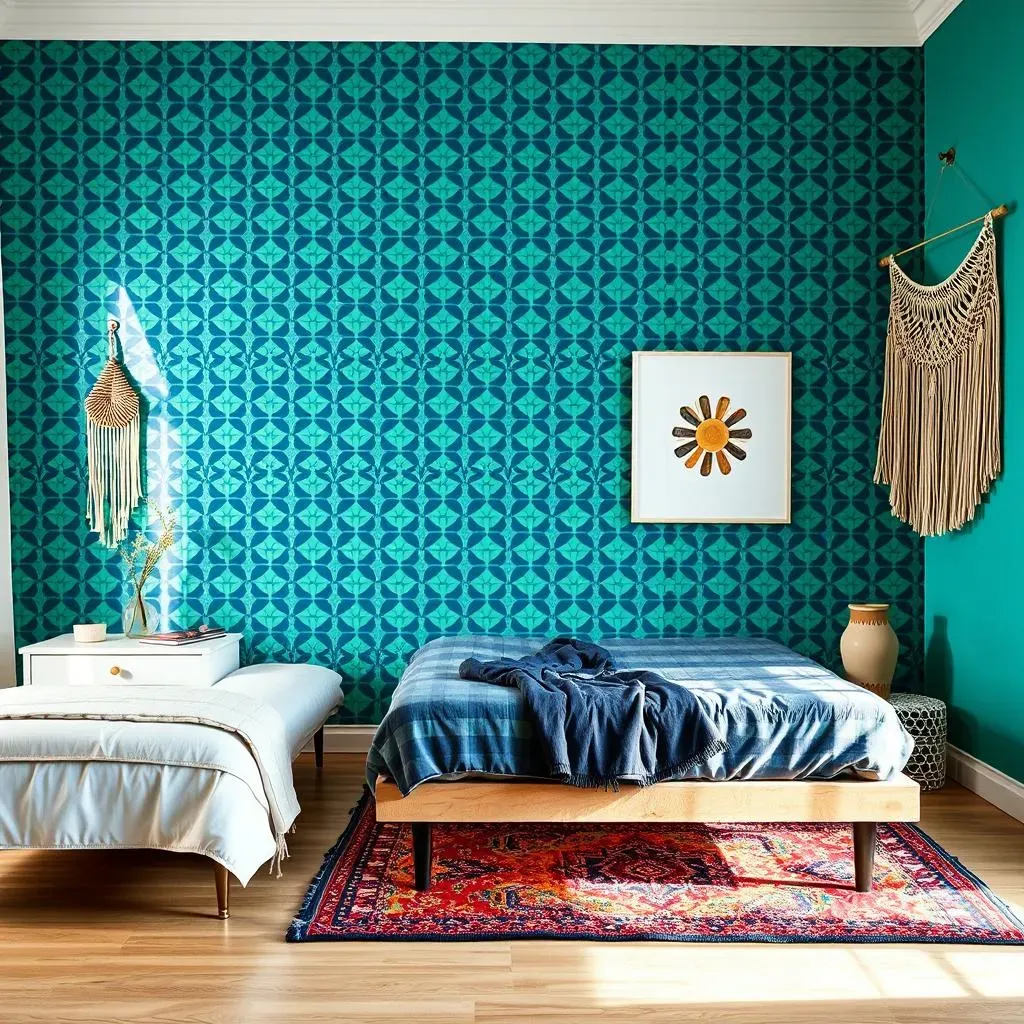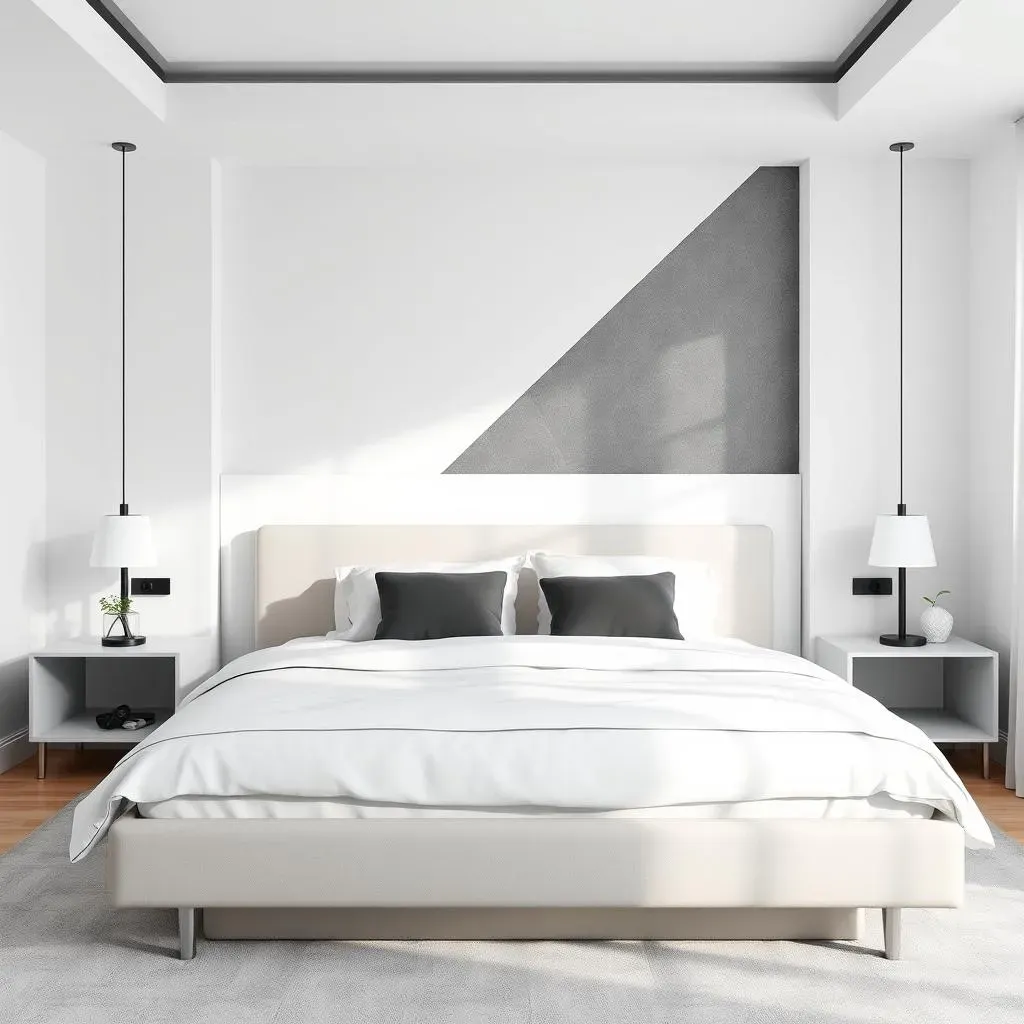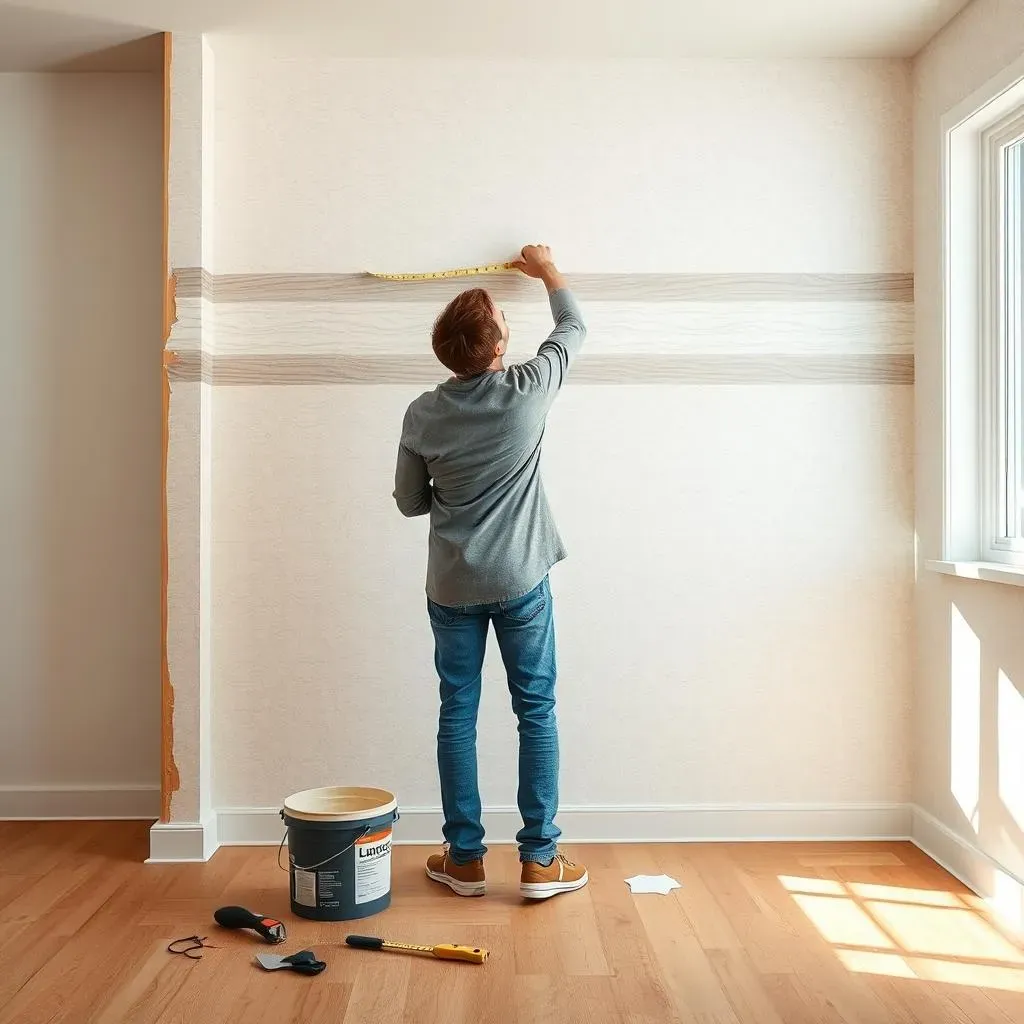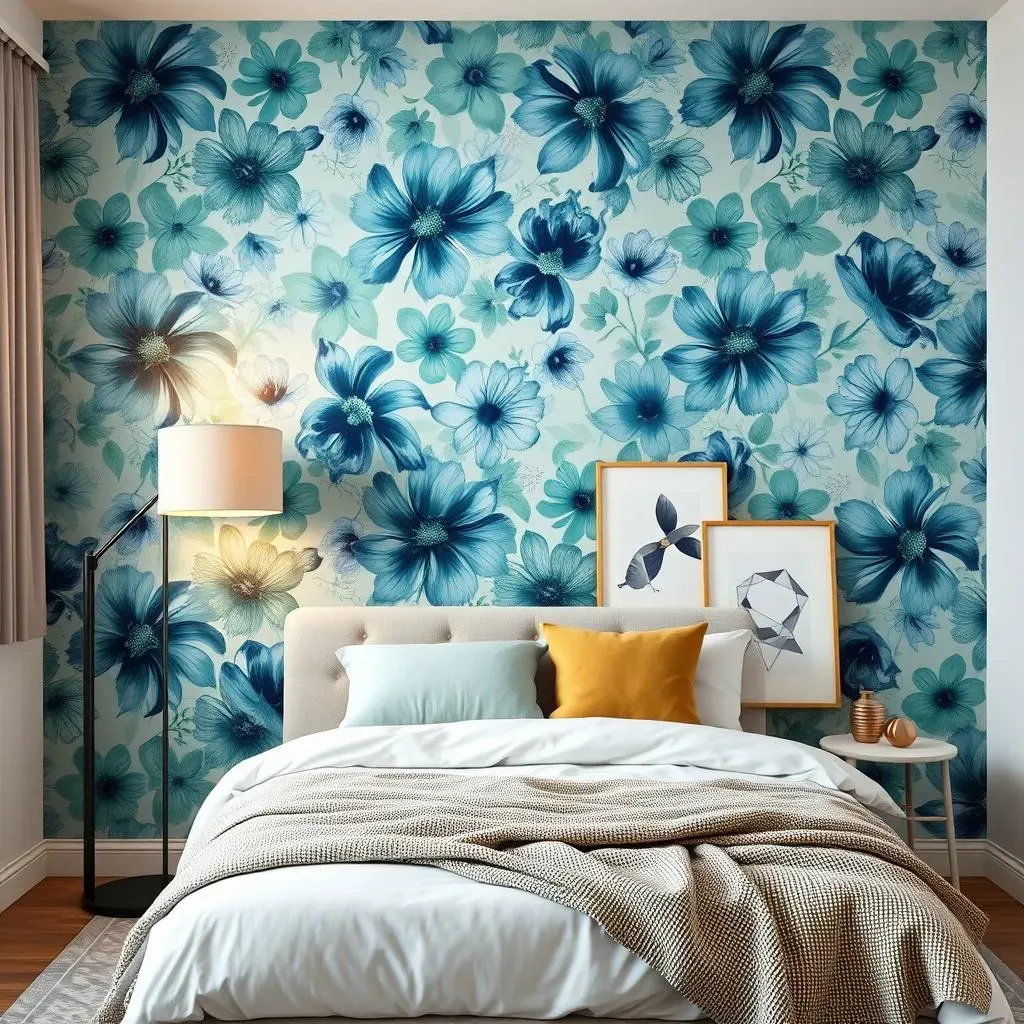Table of Contents
Ready to give your bedroom a stunning makeover without breaking the bank or spending hours on complex renovations? Then you've come to the right place! This article is your ultimate guide to exploring the magic of "wallpaper accent wall ideas for bedroom." We'll walk you through everything you need to know, from choosing the perfect wallpaper to match your style and creating a truly unique space, to mastering the art of DIY installation. Get ready to be inspired by a wide range of design ideas, perfect for various bedroom styles, from modern minimalism to cozy bohemian retreats. We'll cover selecting the ideal wallpaper for your bedroom's personality, showcasing clever styling tricks to make your accent wall pop, and providing a simple, step-by-step guide for tackling this project yourself. Whether you're a seasoned DIY enthusiast or a complete beginner, this article will empower you to transform your bedroom into a stylish sanctuary. Let's dive in and discover the endless possibilities!
Choosing the Perfect Wallpaper for Your Bedroom Accent Wall

Choosing the Perfect Wallpaper for Your Bedroom Accent Wall
Considering Your Bedroom's Style
Before you even think about patterns or colors, take a good look at your bedroom. What's the overall vibe? Is it modern and minimalist, cozy and rustic, or something in between? Your wallpaper choice should complement, not clash with, your existing decor. A bold geometric print might look amazing in a contemporary space, but feel out of place in a room filled with antique furniture. Think about the colors you already have – your bedding, curtains, and furniture – and choose a wallpaper that harmonizes with those hues.
Choosing the right wallpaper is like picking the perfect outfit; it needs to fit your personality and the occasion. A subtle floral pattern might work beautifully for a romantic bedroom, while a dramatic mural could be the statement piece for a more eclectic space. Don't be afraid to experiment, but always keep your existing decor in mind – consistency is key!
Bedroom Style | Wallpaper Suggestions |
|---|---|
Modern Minimalist | Geometric patterns, solid colors, subtle textures |
Bohemian | Floral prints, intricate patterns, rich jewel tones |
Rustic | Wood textures, muted colors, nature-inspired designs |
Exploring Different Wallpaper Types and Materials
The world of wallpaper is vast! You've got your traditional paper wallpapers, durable vinyl options, luxurious fabric choices, and even peel-and-stick varieties perfect for renters or those who like to change things up often. Paper wallpapers offer a classic look and feel, but they are more delicate and might not be ideal for high-traffic areas or bathrooms. Vinyl wallpapers are super tough, easy to clean, and resistant to moisture, making them a practical choice. Fabric wallpapers, on the other hand, add a touch of sophistication and texture, but they tend to be more expensive.
Peel-and-stick wallpapers are a game-changer! They're incredibly easy to install and remove, making them perfect for renters or anyone hesitant about committing to a permanent wallpaper choice. However, they might not be as durable as other options and the designs can sometimes be a little limited. Consider your budget, lifestyle, and the specific needs of your bedroom when making your selection. A little research goes a long way!
- Paper Wallpaper: Classic look, delicate, affordable.
- Vinyl Wallpaper: Durable, easy to clean, moisture-resistant.
- Fabric Wallpaper: Luxurious, textured, expensive.
- Peel-and-Stick Wallpaper: Easy to install and remove, renter-friendly.
Matching Color and Pattern to Your Personal Preferences
Now for the fun part: choosing the colors and patterns that speak to you! Think about your favorite colors and how they make you feel. Do you crave calming blues and greens, or are you drawn to vibrant reds and oranges? Your wallpaper should reflect your personality and create a space where you feel comfortable and relaxed. Don't be afraid to experiment with different patterns – from bold geometric prints to delicate florals, the possibilities are endless!
Remember, your accent wall is a chance to express your individuality. If you love a particular artist or design style, consider incorporating that into your wallpaper choice. It’s your bedroom, so make it reflect *you*. Just make sure the colors and patterns you choose work well with the overall style of your room. A cohesive look is more pleasing to the eye than a clash of styles.
Styling Your Wallpaper Accent Wall: Design Ideas & Tips

Styling Your Wallpaper Accent Wall: Design Ideas & Tips
Highlighting Your Wallpaper with Furniture Placement
Once your stunning wallpaper is up, it's time to work your magic with furniture placement! Don't let your beautiful accent wall get lost in the shuffle. Strategically position key pieces of furniture to draw attention to it. For example, placing your bed directly against the accent wall creates a dramatic focal point, especially if you have a headboard that complements the wallpaper's design. If you have a seating area, consider placing a sofa or armchairs to frame the wall, creating a cozy and inviting nook.
Think of your furniture as the supporting actors in a play where the wallpaper is the star. A simple, understated sofa will let the wallpaper shine, while a bold, patterned sofa might compete for attention – choose wisely! Consider the scale of your furniture too; oversized pieces can overwhelm a smaller wall, while tiny furniture can get lost against a large, busy design. Experiment with different arrangements to see what works best for your space and lets your wallpaper really stand out.
Furniture Piece | Placement Tips |
|---|---|
Bed | Center against the accent wall for maximum impact |
Sofa/Armchairs | Position to frame the wall, creating a defined seating area |
Desk/Vanity | Place strategically to create a visually appealing workspace |
Accessorizing Your Accent Wall for Maximum Impact
Now it's time to add the finishing touches! Accessorizing your wallpaper accent wall is like adding jewelry to an outfit; it elevates the entire look. The key is to choose accessories that complement, not compete with, your wallpaper. If your wallpaper is bold and patterned, opt for simpler accessories – perhaps a few carefully chosen pieces of artwork or a sleek mirror. If your wallpaper is more subdued, you can have a little more fun with your accessories, adding pops of color or texture.
Consider the overall style of your room when choosing accessories. A minimalist room might benefit from a single, statement piece of art, while a bohemian room could handle a collection of smaller items. Don't overcrowd the space; less is often more. A few well-chosen accessories can make a bigger impact than a cluttered arrangement. Remember to step back and assess the overall look; if something feels off, don't hesitate to rearrange or remove items until you achieve the perfect balance.
- Artwork: Choose pieces that complement the wallpaper's color palette and style.
- Mirrors: Reflect light and create a sense of spaciousness.
- Shelving: Display decorative items or books in a visually appealing way.
- Lighting: Highlight the wallpaper with strategically placed lamps or sconces.
Wallpaper Accent Wall Ideas for Different Bedroom Styles

Wallpaper Accent Wall Ideas for Different Bedroom Styles
Modern Minimalist Bedrooms: Clean Lines and Bold Statements
For a modern minimalist bedroom, think clean lines and bold statements. A geometric wallpaper in a neutral color palette, like grays, whites, or blacks, can create a sophisticated and calming atmosphere. Subtle textures, like a subtle linen effect or a slightly raised pattern, can add visual interest without overwhelming the space. Avoid overly busy patterns or bright colors; the goal is to create a sense of serenity and order. Consider a wallpaper with a single, striking graphic element as a focal point, or a textured wallpaper that adds depth without being distracting.
Imagine a crisp white bedroom with a geometric wallpaper accent wall in a charcoal gray, punctuated by a sleek, minimalist bed frame and simple, modern nightstands. The overall effect is clean, chic, and incredibly stylish. A similar approach could involve a textured wallpaper with a subtle pattern adding a touch of visual interest to a neutral space without overwhelming it. Remember, less is more in a minimalist design scheme.
Color Palette | Pattern | Texture |
|---|---|---|
Neutrals (grays, whites, blacks) | Geometric, stripes, subtle patterns | Linen, embossed, textured |
Bohemian Bedrooms: Embrace Color and Pattern
Bohemian bedrooms are all about embracing color, pattern, and texture. Think rich jewel tones, intricate floral prints, and a touch of eclecticism. A wallpaper with a bold floral pattern, a vibrant geometric design, or a mix of both can add a touch of whimsy and personality to the space. Don't be afraid to experiment with different colors and textures; the goal is to create a vibrant and eclectic space that reflects your unique style. Layer in different textures with throws, cushions, and rugs to further enhance the bohemian feel.
Picture a room with a rich teal accent wall featuring a large-scale floral wallpaper. The wall is paired with a macrame wall hanging, a plush rug with intricate patterns, and a mix of vintage and modern furniture pieces. The overall effect is cozy, inviting, and distinctly bohemian. Another option might be a wallpaper with a bold geometric pattern in warm, earthy tones, complemented by woven textiles and natural materials. The key is to create a space that feels layered and eclectic, reflecting a love of global styles and textures.
- Rich jewel tones (emerald, sapphire, ruby)
- Intricate floral prints
- Geometric patterns
- Layered textures (rugs, throws, cushions)
Creating a DIY Wallpaper Accent Wall: A StepbyStep Guide

Creating a DIY Wallpaper Accent Wall: A StepbyStep Guide
Gathering Your Supplies and Preparing the Wall
Before you even think about pasting wallpaper, you need to gather your supplies and prep your wall. This isn't rocket science, but a little organization goes a long way. You'll need your chosen wallpaper (measure carefully to avoid shortages!), wallpaper paste (follow the instructions on the wallpaper packaging – different types need different pastes!), a measuring tape, a level, a smoothing tool (a plastic smoother is ideal), a utility knife or scissors, a bucket of clean water, a sponge, and a few clean cloths. Oh, and don't forget a stepladder if your wall is high!
Next, prepare your wall. It needs to be clean, smooth, and free of any loose paint or imperfections. Use a damp cloth to wipe down the wall and let it dry completely. If there are any holes or cracks, fill them with spackle and sand them smooth. A smooth surface ensures your wallpaper adheres properly and looks its best. Trust me, this prep work is crucial for a professional-looking finish. Don't skip this step; it's the foundation of a successful DIY project.
Supply | Purpose |
|---|---|
Wallpaper | The star of the show! |
Wallpaper Paste | Keeps the wallpaper stuck to the wall. |
Smoothing Tool | Gets rid of air bubbles and wrinkles. |
Utility Knife/Scissors | For trimming excess wallpaper. |
Applying the Wallpaper and Finishing Touches
Now for the fun part: applying the wallpaper! Start by measuring and cutting your wallpaper panels. Always add a few extra inches to each panel to account for trimming later. Apply the wallpaper paste according to the instructions on the packaging. Smooth the wallpaper onto the wall, starting from the center and working your way outwards. Use your smoothing tool to remove any air bubbles or wrinkles. Overlap the panels slightly and trim any excess with a utility knife or scissors. Work slowly and carefully; once the paste is set, it's difficult to reposition the wallpaper.
Once all the panels are up, step back and admire your handiwork! If there are any minor imperfections, you can touch them up with a damp cloth. Allow the wallpaper to dry completely before adding any accessories. And that's it! You've successfully created a stunning DIY wallpaper accent wall. Remember, practice makes perfect; don't be discouraged if your first attempt isn't flawless. Each project is a learning experience, and your skills will improve with each new wallpaper installation. You'll be amazed at the transformation a little DIY can bring!
- Measure and cut panels carefully.
- Apply paste according to instructions.
- Smooth out air bubbles and wrinkles.
- Trim excess wallpaper carefully.
- Allow to dry completely.
